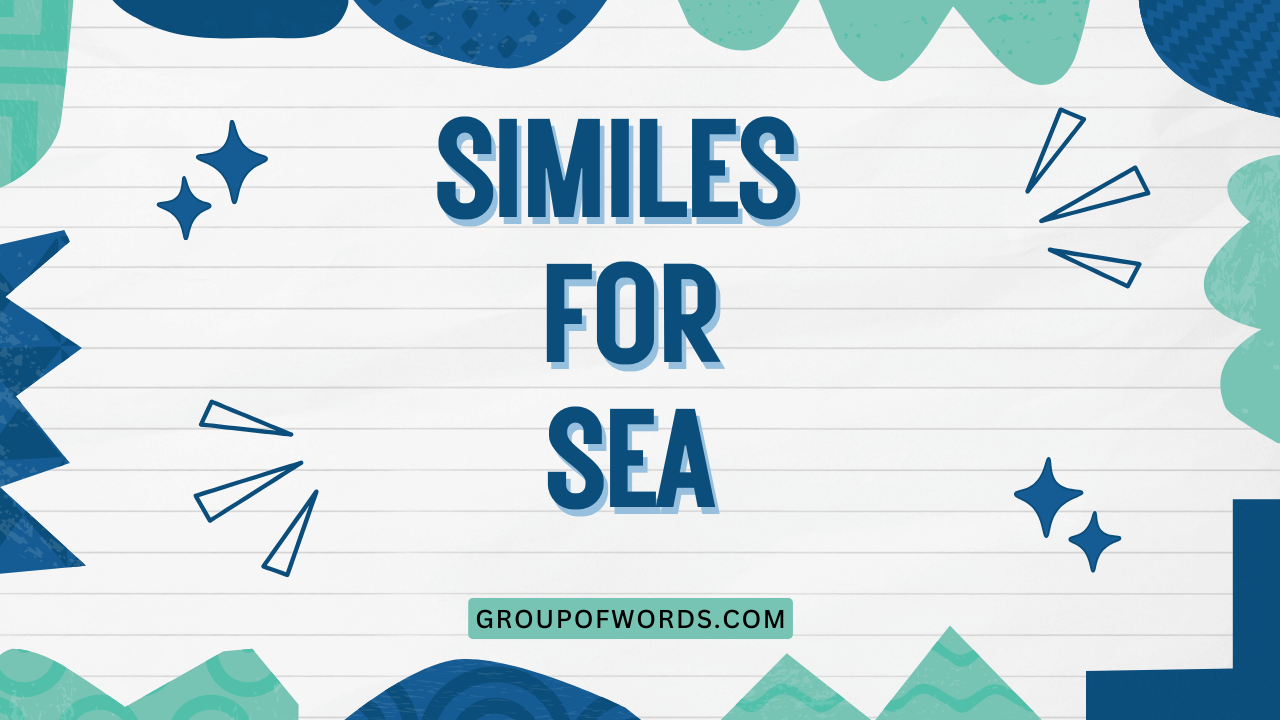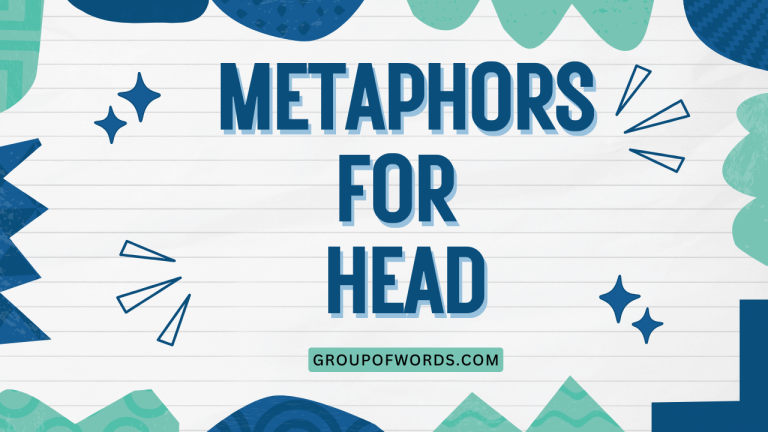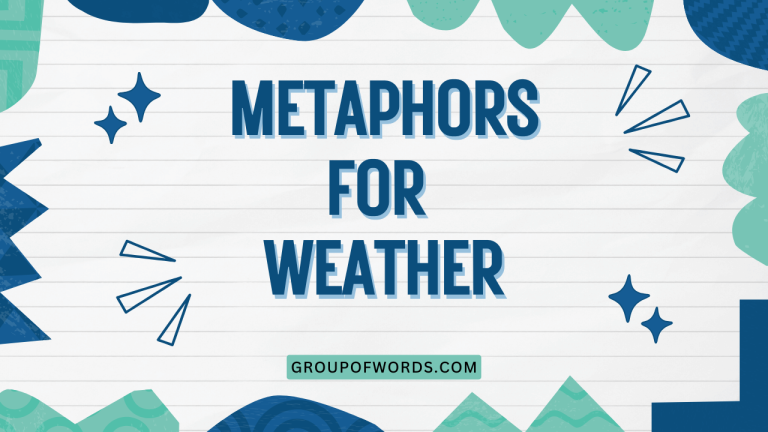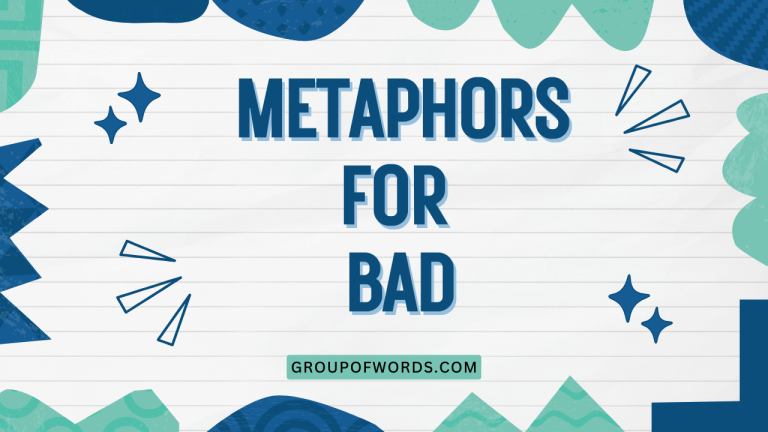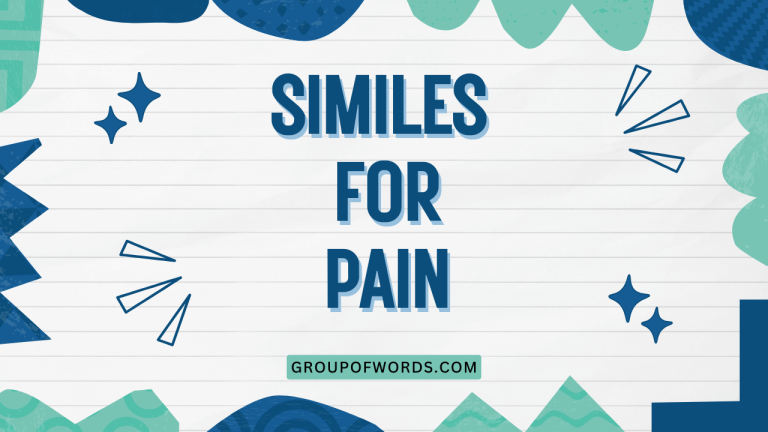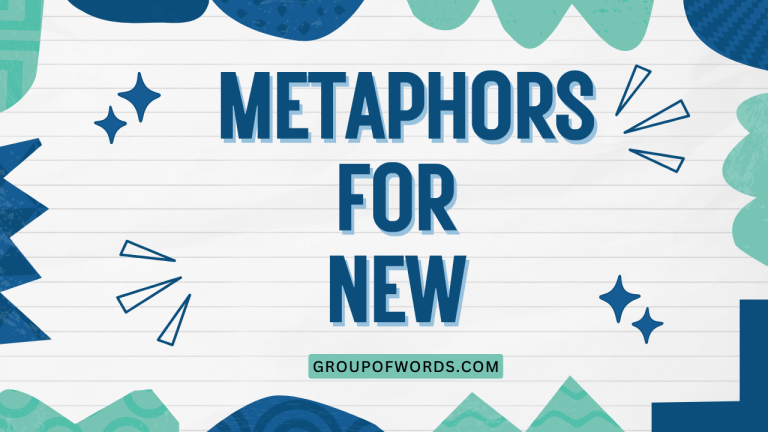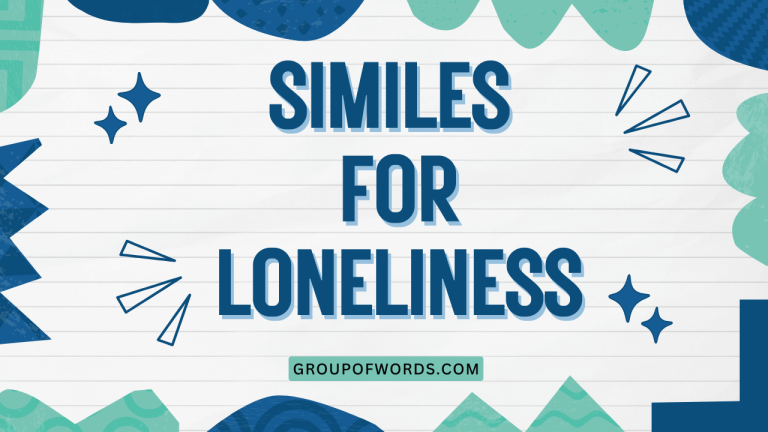Similes for the Sea: A Comprehensive Guide to Figurative Language
The sea, in its vastness and mystery, has always been a source of inspiration for writers and poets. Similes, with their ability to create vivid comparisons, are a powerful tool for capturing the essence of the ocean.
Understanding how to use similes effectively can greatly enhance your writing, adding depth and imagery to your descriptions. This article provides a comprehensive guide to similes for the sea, exploring their structure, types, and usage with numerous examples and practice exercises.
Whether you’re a student, a writer, or simply an English enthusiast, this guide will equip you with the knowledge and skills to master the art of using similes to describe the sea.
Table of Contents
- Definition of Simile
- Structural Breakdown of Similes
- Types of Similes for the Sea
- Examples of Similes for the Sea
- Usage Rules for Similes
- Common Mistakes When Using Similes
- Practice Exercises
- Advanced Topics: Extended Similes and Metaphors
- Frequently Asked Questions
- Conclusion
Definition of Simile
A simile is a figure of speech that compares two unlike things using the words “like” or “as.” It’s a direct comparison, highlighting a shared quality or characteristic between the two subjects. Similes are used to create vivid imagery, enhance descriptions, and make writing more engaging.
They help readers understand abstract concepts by relating them to something familiar. Similes are a fundamental element of figurative language, playing a crucial role in poetry, prose, and everyday speech.
Understanding and using similes effectively can significantly improve your writing and communication skills.
The primary function of a simile is to draw a comparison between two dissimilar things, thereby illuminating a specific quality or attribute. This comparison helps the reader to visualize and understand the subject more clearly.
For example, describing the sea as “calm as a sleeping child” helps the reader understand the sea’s peaceful and serene state. Similes add depth and texture to writing, making it more evocative and memorable.
They are essential for creating imagery and conveying emotions effectively.
Similes can be used in various contexts, from literary works to everyday conversations. In literature, they are often employed to enhance descriptions and create a specific mood or atmosphere.
In everyday speech, similes can make your language more colorful and expressive. For instance, you might say “the sea was as blue as a sapphire” to describe the ocean’s color.
The versatility of similes makes them a valuable tool for writers and speakers alike. Recognizing and using similes effectively can significantly improve your communication skills.
Structural Breakdown of Similes
The basic structure of a simile involves three key components: the subject being described, the word “like” or “as,” and the object or concept to which the subject is being compared. Understanding this structure is crucial for constructing effective and meaningful similes.
Let’s break down each component in detail.
Subject: This is the entity or concept that you are describing. In the context of this article, the subject is often the sea or some aspect of it, such as its waves, color, or depth. For example, in the simile “the sea was like a raging beast,” the sea is the subject.
Comparison Word (“like” or “as”): These words serve as the bridge between the subject and the object of comparison. They indicate that a comparison is being made. The choice between “like” and “as” is often a matter of personal preference or stylistic consideration, but both function identically in creating a simile.
Object of Comparison: This is the entity or concept to which the subject is being compared. It should share a quality or characteristic with the subject that you want to highlight. In the example “the sea was like a raging beast,” the “raging beast” is the object of comparison. The effectiveness of a simile depends on the aptness and clarity of this comparison.
Here’s a table illustrating the structural components of similes with different examples related to the sea:
| Subject | Comparison Word | Object of Comparison | Example Simile |
|---|---|---|---|
| The sea | like | a mirror | The sea was like a mirror, reflecting the sky above. |
| The waves | as | angry fists | The waves crashed against the shore as angry fists. |
| The ocean’s depths | like | a bottomless pit | The ocean’s depths seemed like a bottomless pit, dark and mysterious. |
| The sea’s surface | as | glass | The sea’s surface was as smooth as glass on a calm day. |
| The tide | like | a heartbeat | The tide ebbed and flowed like a heartbeat, constant and rhythmic. |
Understanding these structural elements allows you to construct similes that effectively convey your intended meaning and create vivid imagery. By carefully choosing the subject, comparison word, and object of comparison, you can craft similes that enhance your descriptions of the sea and its many facets.
Types of Similes for the Sea
Similes can be categorized based on what aspect of the sea they describe or what effect they aim to achieve. Understanding these different types can help you choose the most appropriate simile for your writing.
This section will explore several types of similes commonly used to describe the sea, including those that focus on appearance, behavior, and the emotions the sea evokes.
Similes Describing Appearance: These similes focus on the visual aspects of the sea, such as its color, texture, and size. They help the reader visualize the sea more vividly. Examples include “as blue as a sapphire,” “like a shimmering blanket,” and “as vast as the horizon.”
Similes Describing Behavior: These similes describe the actions and movements of the sea, such as the crashing of waves, the ebb and flow of the tide, and the sea’s overall dynamism. Examples include “like a raging beast,” “as gentle as a whisper,” and “like a restless sleeper.”
Similes Evoking Emotions: These similes aim to create a specific emotional response in the reader, such as awe, fear, peace, or wonder. They often use comparisons that resonate with human feelings and experiences. Examples include “as calming as a lullaby,” “like a daunting challenge,” and “as mysterious as a dream.”
Here is a table summarizing the different types of similes for the sea:
| Type of Simile | Description | Example |
|---|---|---|
| Describing Appearance | Focuses on the visual aspects of the sea. | The sea was as green as emeralds. |
| Describing Behavior | Describes the actions and movements of the sea. | The waves crashed like thunder. |
| Evoking Emotions | Aims to create an emotional response in the reader. | The sea felt as lonely as a forgotten dream. |
By understanding these different types of similes, you can choose the most effective way to describe the sea and evoke the desired response in your audience. Each type offers a unique perspective and can add depth and richness to your writing.
Examples of Similes for the Sea
This section provides a wide range of examples of similes for the sea, organized by category. These examples will illustrate how similes can be used to describe the sea’s appearance, behavior, and the emotions it evokes.
Each category will include multiple examples to provide a comprehensive overview.
Similes Describing the Sea’s Appearance
Similes that describe the sea’s appearance often focus on its color, texture, and size. These comparisons help the reader to visualize the sea in vivid detail.
Here are some examples:
| Simile | Explanation |
|---|---|
| As blue as a sapphire | Compares the sea’s color to the deep blue of a sapphire. |
| Like a shimmering blanket | Describes the sea’s surface as a vast, reflective expanse. |
| As green as emeralds | Compares the sea’s color to the vibrant green of emeralds, often used for coastal waters. |
| Like liquid silver under the moonlight | Describes the sea’s reflective quality under the moonlight. |
| As clear as crystal | Describes the sea’s transparency and purity. |
| Like a wrinkled sheet of blue paper | Describes the sea’s surface when slightly choppy. |
| As vast as the horizon | Emphasizes the sea’s immense size and expanse. |
| Like a mirror reflecting the sky | Highlights the sea’s ability to reflect the sky’s colors and clouds. |
| As dark as ink | Describes the sea’s color in deep, shadowed areas. |
| Like a canvas of endless blue | Presents the sea as a work of art with limitless possibilities. |
| As smooth as glass | Describes the sea’s surface on a calm day. |
| Like a turquoise jewel | Compares the sea’s color to the vibrant blue-green of a turquoise. |
| As gray as a dove’s feather | Describes the sea’s color on an overcast day. |
| Like a rippling tapestry | Describes the intricate patterns of the sea’s surface. |
| As white as foam | Focuses on the color of the sea foam. |
| Like a liquid sapphire | Emphasizes the intense blue color of the sea. |
| As boundless as the sky | Highlights the sea’s seemingly limitless expanse. |
| Like a sheet of hammered metal | Describes the sea’s rough, textured surface in stormy conditions. |
| As golden as honey in the sunlight | Describes the sea’s color when reflecting sunlight. |
| Like an endless expanse of blue | Highlights the sea’s vastness and color. |
| As black as night | Describes the darkness of the sea at night. |
Similes Describing the Sea’s Behavior
Similes that describe the sea’s behavior often focus on its movements, such as the crashing of waves and the ebb and flow of the tide. These comparisons help the reader understand the sea’s dynamic nature.
Here are some examples:
| Simile | Explanation |
|---|---|
| Like a raging beast | Describes the sea’s turbulent and powerful nature during a storm. |
| As gentle as a whisper | Describes the sea’s calm and peaceful state. |
| Like a restless sleeper | Captures the sea’s constant movement and change. |
| As unpredictable as a child’s mood | Highlights the sea’s variability and sudden changes. |
| Like a dance of waves | Describes the rhythmic and graceful movement of the waves. |
| As relentless as time | Emphasizes the sea’s continuous and unending movement. |
| Like a symphony of crashing waves | Describes the complex and powerful sounds of the sea. |
| As calming as a gentle breeze | Describes the soothing effect of the sea’s movements. |
| Like a predator stalking its prey | Describes the sea’s menacing and powerful approach during a storm. |
| As fluid as a dream | Captures the sea’s ever-changing and ethereal nature. |
| Like a heartbeat, constant and rhythmic | Describes the ebb and flow of the tide. |
| As wild as a storm | Describes the untamed power of the sea during a tempest. |
| Like a playground for the wind | Describes how the wind interacts with the sea’s surface. |
| As soothing as a warm bath | Describes the calming effect of being near the sea. |
| Like a rolling carpet | Describes the continuous movement of the waves. |
| As turbulent as a troubled mind | Captures the sea’s chaotic state during a storm. |
| Like a powerful engine | Describes the relentless energy of the sea. |
| As unpredictable as fate | Highlights the sea’s uncertain and changeable nature. |
| Like a canvas painted by the wind | Describes the patterns created on the sea’s surface by the wind. |
| As eternal as the stars | Emphasizes the sea’s timeless and enduring presence. |
| Like a playful puppy | Describes the sea as energetic and lively. |
Similes Evoking Emotions about the Sea
Similes that evoke emotions about the sea often focus on the feelings it inspires, such as awe, fear, peace, or wonder. These comparisons help the reader connect with the sea on an emotional level.
Here are some examples:
| Simile | Explanation |
|---|---|
| As calming as a lullaby | Evokes a sense of peace and tranquility. |
| Like a daunting challenge | Inspires a sense of respect and apprehension. |
| As mysterious as a dream | Evokes a sense of wonder and intrigue. |
| Like a pathway to the unknown | Inspires a sense of adventure and exploration. |
| As vast as our imagination | Evokes a sense of limitless possibility. |
| Like a mirror to our souls | Inspires introspection and self-reflection. |
| As eternal as hope | Evokes a sense of enduring optimism. |
| Like a story without end | Inspires a sense of timelessness and continuity. |
| As deep as our deepest secrets | Evokes a sense of mystery and hidden depths. |
| Like a refuge from the world | Inspires a sense of safety and escape. |
| As lonely as a forgotten dream | Evokes a sense of solitude and melancholy. |
| Like a comforting embrace | Inspires a sense of warmth and security. |
| As awe-inspiring as a cathedral | Evokes a sense of reverence and wonder. |
| Like a reminder of our insignificance | Inspires humility and perspective. |
| As powerful as our deepest fears | Evokes a sense of respect and caution. |
| Like a source of endless fascination | Inspires curiosity and wonder. |
| As soothing as a mother’s touch | Evokes a sense of comfort and care. |
| Like a canvas for our emotions | Inspires expression and release. |
| As vast as our capacity for love | Evokes a sense of boundless affection. |
| Like a constant companion | Inspires feelings of comfort and presence. |
These examples demonstrate the versatility of similes in describing the sea and the wide range of emotions they can evoke. By using similes effectively, you can create vivid and memorable descriptions that resonate with your audience.
Usage Rules for Similes
Using similes effectively requires understanding certain rules and guidelines to ensure clarity and impact. This section outlines the key rules for using similes, including considerations for relevance, originality, and avoiding clichés.
Relevance: The comparison made in a simile should be relevant and logical. The two things being compared should share a common characteristic or quality that is being highlighted. For example, comparing the sea to a “raging beast” is relevant because both share the quality of being powerful and potentially destructive during a storm.
Originality: While some common similes are widely understood and accepted, striving for originality can make your writing more engaging and memorable. Avoid overused clichés and try to create fresh and unique comparisons. Instead of saying “as blue as the sea” (which is somewhat redundant), consider “as blue as a sapphire.”
Clarity: The simile should be clear and easy to understand. Avoid using obscure or overly complex comparisons that may confuse the reader. The purpose of a simile is to enhance understanding, not to obscure it. Ensure that the object of comparison is familiar enough for the reader to grasp the intended meaning.
Context: Consider the context in which the simile is being used. The appropriateness of a simile can depend on the tone, style, and audience of your writing. A simile that works well in a poem may not be suitable for a scientific report. Tailor your similes to fit the specific context and purpose of your writing.
Here is a table summarizing the key usage rules for similes:
| Rule | Description | Example |
|---|---|---|
| Relevance | The comparison should be logical and share a common quality. | Correct: The sea was like a mirror, reflecting the sky. |
| Originality | Avoid overused clichés; strive for unique comparisons. | Better: The sea was as green as emeralds (instead of “as blue as the sea”). |
| Clarity | The simile should be easy to understand. | Correct: The waves crashed like thunder (easily understood). |
| Context | The simile should be appropriate for the tone and audience. | Appropriate: In a poem, “The sea sighed like a lover’s lament.” |
By following these usage rules, you can ensure that your similes are effective, clear, and engaging, enhancing your writing and communication skills.
Common Mistakes When Using Similes
Even experienced writers sometimes make mistakes when using similes. Understanding these common errors can help you avoid them and improve the quality of your writing.
This section will address frequent mistakes and provide examples of correct versus incorrect usage.
Mixing Metaphors and Similes: A common mistake is to inadvertently create a metaphor while intending to create a simile, or vice versa. Remember that similes use “like” or “as” to make a direct comparison, while metaphors imply a comparison without using these words.
Using Clichés: Overusing familiar similes can make your writing seem unoriginal and uninspired. While clichés can be effective in certain contexts, it’s generally better to strive for fresh and unique comparisons.
Illogical Comparisons: The comparison made in a simile should be logical and relevant. Comparing two things that have no clear connection can confuse the reader and weaken the impact of your writing.
Overcomplicating Similes: A simile should be clear and easy to understand. Avoid using overly complex or obscure comparisons that may confuse the reader. The goal is to enhance understanding, not to obscure it.
Here is a table illustrating common mistakes when using similes, with examples of incorrect and correct usage:
| Mistake | Incorrect Example | Correct Example | Explanation |
|---|---|---|---|
| Mixing Metaphors and Similes | The sea was a raging beast, like it was angry. | The sea was like a raging beast. | The incorrect example mixes a metaphor (“a raging beast”) with a simile. |
| Using Clichés | The sea was as blue as the sea. | The sea was as blue as a sapphire. | The incorrect example is a redundant cliché. |
| Illogical Comparisons | The sea was like a refrigerator. | The sea was like a vast, unexplored world. | The incorrect example makes an illogical comparison. |
| Overcomplicating Similes | The sea was like an existential quandary wrapped in aqueous ambiguity. | The sea was as mysterious as a dream. | The incorrect example is overly complex and difficult to understand. |
By being aware of these common mistakes, you can avoid them and use similes more effectively in your writing. Strive for clarity, originality, and logical comparisons to create vivid and memorable descriptions.
Practice Exercises
To solidify your understanding of similes for the sea, here are some practice exercises. Complete the following sentences with appropriate similes, focusing on different aspects of the sea such as its appearance, behavior, and the emotions it evokes.
Exercise 1: Complete the Simile
| Question | Answer |
|---|---|
| 1. The sea was as calm as __________. | a sleeping child |
| 2. The waves crashed against the shore like __________. | angry fists |
| 3. The ocean’s depths seemed like __________. | a bottomless pit |
| 4. The sea’s surface was as smooth as __________. | glass |
| 5. The tide ebbed and flowed like __________. | a heartbeat |
| 6. The sea was as green as __________. | emeralds |
| 7. The waves danced like __________. | playful children |
| 8. The sea was as restless as __________. | a troubled mind |
| 9. The ocean’s roar was like __________. | distant thunder |
| 10. The sea stretched out before us, as vast as __________. | the imagination |
Exercise 2: Identify the Type of Simile
For each simile, identify whether it describes the sea’s appearance, behavior, or evokes an emotion.
| Simile | Type |
|---|---|
| 1. The sea was as blue as a sapphire. | Appearance |
| 2. The waves crashed like thunder. | Behavior |
| 3. The sea felt as lonely as a forgotten dream. | Emotion |
| 4. The sea was like a shimmering blanket. | Appearance |
| 5. The tide ebbed and flowed like a heartbeat. | Behavior |
| 6. The sea was as calming as a lullaby. | Emotion |
| 7. The waves danced like playful children. | Behavior |
| 8. The sea was as dark as ink. | Appearance |
| 9. The ocean’s depths were like a daunting challenge. | Emotion |
| 10. The sea was as mysterious as a dream. | Emotion |
Exercise 3: Create Your Own Similes
Write five original similes describing the sea. Try to use different types of similes (appearance, behavior, emotion).
| Question | Answer |
|---|---|
| 1. Write a simile describing the sea’s color. | The sea was as silver as mercury under the cloudy sky. |
| 2. Write a simile describing the sea’s movement. | The waves rolled in like gentle giants, caressing the shore. |
| 3. Write a simile describing the feeling the sea evokes. | The sea felt as vast and unknowable as the universe itself. |
| 4. Write a simile describing the sea during a storm. | The sea roared like a wounded beast, thrashing against the rocks. |
| 5. Write a simile describing the sea on a calm day. | The sea lay still like a sleeping dragon, its power dormant. |
These exercises will help you practice using similes effectively and creatively. By completing these exercises, you will strengthen your understanding of similes and improve your writing skills.
Advanced Topics: Extended Similes and Metaphors
For advanced learners, understanding how to develop extended similes and transition into metaphors can greatly enhance your writing. This section explores these advanced topics, providing insights and examples to elevate your skills.
Extended Similes: An extended simile is a simile that is developed over several lines or even a paragraph. It allows you to explore the comparison in greater detail, adding depth and richness to your writing. Instead of simply stating “the sea was like a raging beast,” you might elaborate on the comparison, describing the beast’s ferocity, its unpredictable nature, and the fear it inspires.
Transitioning to Metaphors: Once you have established a strong simile, you can sometimes transition into a metaphor to create an even more powerful image. This involves dropping the “like” or “as” and directly equating the subject with the object of comparison. For example, after describing the sea as being “like a raging beast,” you might then say, “The sea was a raging beast, tearing at the coastline with its relentless fury.”
Here’s an example of an extended simile that transitions into a metaphor:
The sea was like a restless giant, always moving, always churning. Its waves crashed against the shore like the giant’s heavy footsteps, shaking the earth with their power. The wind howled like the giant’s breath, whipping the sea into a frenzy. The sea was no longer just like a giant; it was the giant itself, an untamed force of nature, forever shaping the world.
This example demonstrates how an extended simile can build a vivid image, which then transitions into a powerful metaphor. By mastering these advanced techniques, you can add depth and complexity to your writing, creating truly memorable and impactful descriptions.
Frequently Asked Questions
This section addresses some frequently asked questions about using similes, providing detailed answers to help clarify any remaining points.
Q1: What is the difference between a simile and a metaphor?
A1: Both similes and metaphors are figures of speech that compare two unlike things, but they do so in different ways. A simile uses the words “like” or “as” to make a direct comparison, whereas a metaphor implies a comparison without using these words.
For example, “The sea is like a mirror” is a simile, while “The sea is a mirror” is a metaphor.
Q2: Can a simile be too obvious or cliché?
A2: Yes, a simile can be too obvious or cliché if it is overused or lacks originality. Using fresh and unique comparisons can make your writing more engaging and memorable.
Avoid common similes like “as blue as the sea” and instead strive for more creative comparisons.
Q3: How do I choose the right object of comparison for a simile?
A3: The object of comparison should share a relevant quality or characteristic with the subject you are describing. It should also be familiar enough for your audience to understand the intended meaning.
Consider the context and the effect you want to achieve when choosing the object of comparison.
Q4: Can I use similes in formal writing?
A4: Yes, similes can be used in formal writing, but they should be used sparingly and appropriately. Ensure that the similes are clear, relevant, and contribute to the overall message of your writing.
Avoid overly creative or informal similes in formal contexts.
Q5: What are some common mistakes to avoid when using similes?
A5: Common mistakes include mixing metaphors and similes, using clichés, making illogical comparisons, and overcomplicating similes. Be mindful of these mistakes and strive for clarity, originality, and relevance in your comparisons.
Q6: How can I improve my ability to create effective similes?
A6: Practice is key to improving your ability to create effective similes. Read widely, pay attention to how other writers use similes, and experiment with different comparisons.
The more you practice, the better you will become at crafting vivid and memorable similes.
Q7: Is it okay to combine multiple similes in one sentence or paragraph?
A7: While it’s possible to combine multiple similes, it’s generally best to use them sparingly. Too many similes in close proximity can overwhelm the reader and detract from the overall impact of your writing.
Use them strategically to enhance your descriptions without overdoing it.
Q8: How do I know if a simile is effective?
A8: An effective simile is one that is clear, relevant, and creates a vivid image in the reader’s mind. It should enhance understanding and add depth to your writing.
If the simile confuses the reader or feels forced, it is likely not effective. Consider getting feedback from others to gauge the effectiveness of your similes.
Conclusion
Mastering the art of using similes to describe the sea can significantly enhance your writing, adding depth, imagery, and emotional resonance to your descriptions. By understanding the structure, types, and usage rules of similes, you can craft vivid and memorable comparisons that bring the sea to life for your readers.
Remember to strive for originality, clarity, and relevance in your similes, and avoid common mistakes such as using clichés or making illogical comparisons. Practicing regularly and experimenting with different comparisons will further improve your skills and allow you to create truly impactful similes.
The sea, with its vastness and complexity, offers endless opportunities for creative descriptions. By using similes effectively, you can capture the essence of the ocean and evoke a wide range of emotions in your audience.
Whether you’re writing poetry, prose, or simply trying to express your love for the sea, similes are a powerful tool for conveying your thoughts and feelings. Continue to explore and experiment with similes, and you will discover the endless possibilities they offer for enhancing your writing and communication skills.
Embrace the challenge, and let your creativity flow like the tides.
